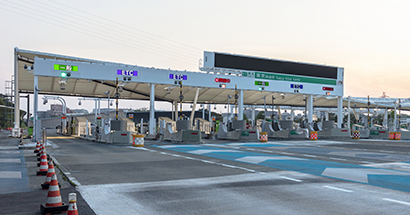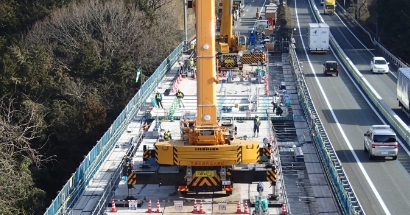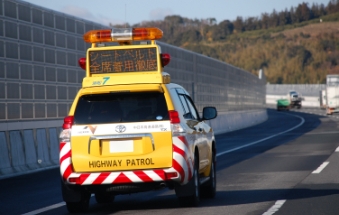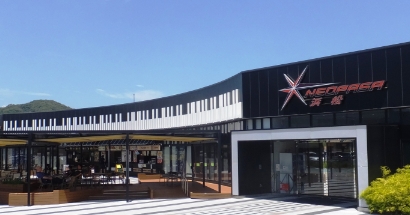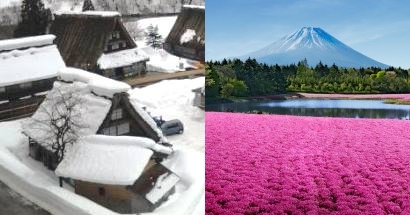Information for Drivers
Rest areas can be a restful oasis during a long drive on the expressway. With fully staffed fuel stations and plenty of facilities, stopping at a service area or parking area is an important part of staying safe on the road. If you have rented a car or are driving your personal car, follow the guide below to get the most out of your stop.
Rest Area Signs
While driving on the expressway, you will see green signs for service areas or parking areas from time to time. These signs have the name of the and a quick guide to what is available there.
-
How to read rest area road signs
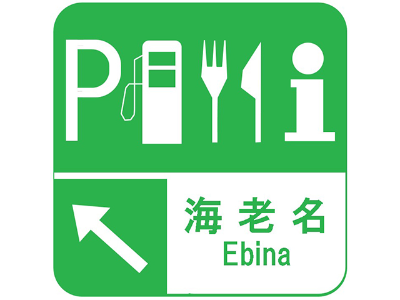
The most common signs are as follows:
'P' means parking.
A gas stand means fuel.
A fork & knife means dining services are available.
A cup also means that there are dining services available.
'i' means that there is a Highway Information Terminal at the service area or parking area.
Parking
Navigating the busy parking lots can sometimes be a bit of a challenge. Here are some things to keep in mind in order to avoid an accident.
-
1.Check if there is space in the parking lot
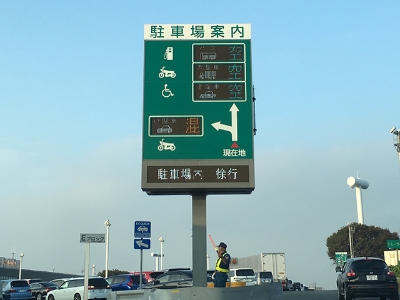
Each rest area has signs explaining the current condition of the parking lot. The most basic signs will show that the lot is full (満) or still has empty spaces (空). These marks are often color-coded red and green to make it easier to tell if a particular lot has parking spaces available.
-
2.Turn on your hazard lights
Because most rest areas have a steady flow of in and out traffic, it is especially important to be alert when parking. For your safety and the safety of others, please turn on your hazard lights while parking. But don't forget to turn them off after you have turned off your engine!
-
3.Be careful walking through the parking lot
Service area parking lots can be especially dangerous because of the large number of cars coming in and out. Even after you exit your car, remember to stay alert of your surroundings as other drivers may not be able to see you walking through the parking lot.
Filling Stations
Most gas stations in Japan offer full service, and the rest area stations are no exception. Almost all are staffed with attendants ready to fill up your tank and get you back on the road.
-
1.Pulling in
Follow the signs to the gas station, and either find an empty stand or follow the directions of the staff. Once you have maneuvered your car into position, turn off your engine and begin the refueling process.
POINT
While there are most rest areas along the NEXCO expressways, be mindful of the amount of gas you have left in your tank. Better to fill up early than run out on the road!
-
2.Taking off your gas cap, and beginning fueling
If there is a station attendant, they will come up and ask you the type and amount of gas that you need. If they do not, then take off the gas cap, put it in the special holder on the gas stand, and then select your payment type and fuel grade.
-
3.Types of fuel and payment methods
There are three types of fuel in Japan: regular (above 89.0), high octane (above 96.0), and diesel. Most gas stations accept credit cards in addition to cash, so expect to be asked which fuel you need and how you would like to pay for your fuel.
-
4.Payment
The payment process is simple, hand your money over to the attendant, and receive your change or get your change from the dedicated change machine found next to the fuel stand. Making sure your gas cap is back on, you are now ready to head back onto the road!
-
Use your Japanese! Helpful words and phrases
- regyura, genkin, mantan
- Regular, Cash, Full Tank
- hai oku, Kurejito, sanzenen bun
- High Octane, Credit, 3,000 yen worth (of gas)
Highway Information Terminal
Inside the rest area building are electronic maps that show current traffic conditions like congestion and road closures.
-
Find out about traffic conditions
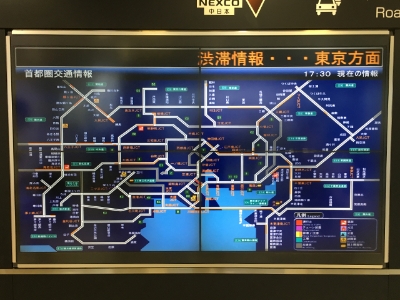
While you are taking a break from driving be sure to check out these futuristic displays. Check them out to see where traffic is and plan your route accordingly. While most are only in Japanese, some of the maps offer information in multiple languages.
POINT
Use the information and traffic forecast on the display map to help plan out your breaks and when you will need to get gas.
To learn more about the rest areas, please see below.
- For tips&tricks information, please click here.
- For information about food and drink, click here.
- For shopping information, please click here.
- For information on other facilities, please click here.
- For information about wifi, please click here.
- For information about special services, please click here.
- Information for drivers can be found here.


